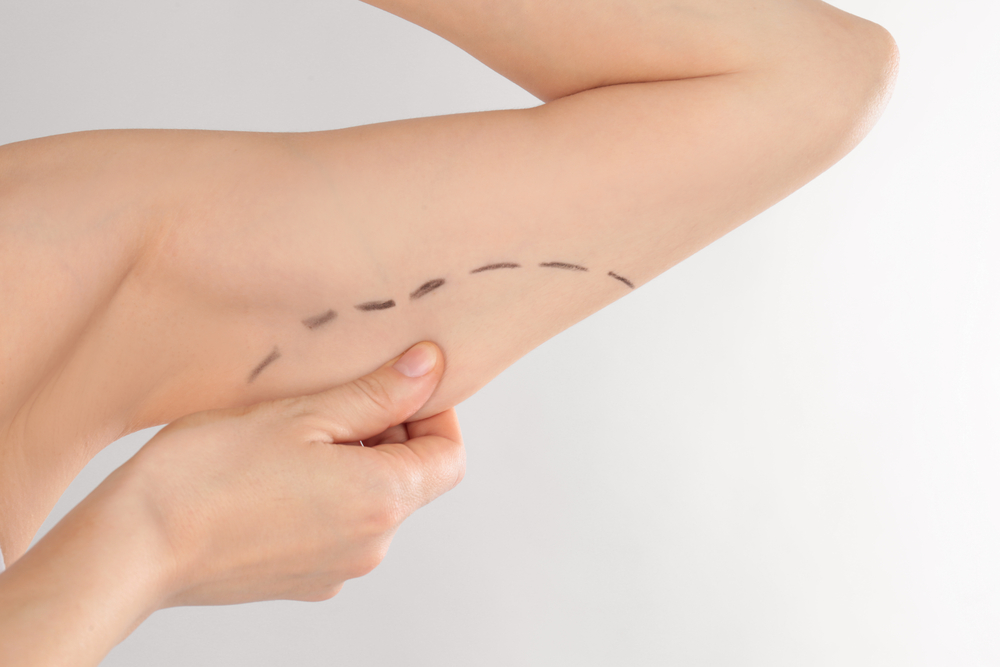At Northstate Plastic Surgery Associates in Chico, CA, one of our most popular procedures is the arm lift, also known as Brachioplasty. Today, we are addressing all of the most commonly asked questions about this procedure, including how long the recovery takes.
FAQs About Arm Lifts
How Long Does It Take to Recover?
There is no universal timeline for recovery from an arm lift. Everybody heals at a different rate based on factors such as skin health and overall health. However, in general, the entire recovery process will take around two to three weeks.
What Can I Expect During the Recovery Process?
You may not drive within 24 hours of being put under general anesthesia or local anesthesia and sedation. Most people don’t drive until 10 days after their arm lift because they are taking prescription analgesics that may cause drowsiness.
Most clients who work a white-collar job return to work a week after their procedure. Clients who work a blue-collar job usually return to work two weeks after their procedure. It is absolutely crucial that you avoid any choices that can elevate your blood pressure during the first seven days post-op.
What Activities Can Elevate My Blood Pressure?
Some of the most common activities that can elevate your blood pressure include HIIT exercises, vigorous cardiovascular exercises, and resistance training. However, there are also activities that can elevate your blood pressure that are often overlooked.
For instance, you should not consume over 200 milligrams of caffeine daily. You should not consume over three grams of sodium daily. You should not consume alcohol or nicotine. You should not allow yourself to become dehydrated. During your initial consultation, we will provide you with a comprehensive list of everything you should avoid while in recovery.
Can I Engage in Moderate-Intensity Cardio or Resistance Training?
Yes and no. You may engage in moderate-intensity cardio as you see fit. In fact, regular walking during your recovery is strongly encouraged. You may also perform resistance training exercises with very light weights. You may not lift anything weighing over five pounds during your first week of recovery.
Do not lift anything weighing over 10 pounds during the second week of your recovery. Finally, do not lift anything over 15 pounds in the third week of your recovery. If you have any questions at any point during your recovery, please do not hesitate to contact us for clarification.
What Can I Do to Make My Recovery Smoother?
There are several things you can do to speed up your recovery process. Some are more important than others. For instance, we require our clients to stop smoking in the six weeks preceding and proceeding their procedure. They should avoid alcohol for 10 days before and after their procedure. However, there are some recommendations we make, too.
For instance, we strongly recommend that you prepare a room in your home specifically for your recovery. Set it up with plenty of water and entertainment. This should be the room in your home that you feel most comfortable in. It should also include your prescription antibiotics and analgesics. Your antibiotics must be taken exactly as prescribed. Analgesics are taken as needed.
What Should I Eat During My Recovery?
We strongly encourage our clients to eat a healthy diet high in bioavailable protein and soluble fiber. Keep in mind that there is nothing wrong with incorporating insoluble fiber into your diet: it’s just that the soluble fiber plays a much more significant role in the comfort of your recovery. Most people find their prescription analgesics work better when taken with soluble fiber.
Without knowing your dietary restrictions, it is hard to advise you on what to eat. However, we can tell you that lentils, peas, beans, almonds, brown rice, and quinoa are excellent sources of both soluble fiber and bioavailable protein. Your primary care physician should be able to refer you to a licensed nutritionist who can help you meal plan.
How Much Water Should I Drink During My Recovery?
We strongly encourage our clients to aim for drinking a gallon of water per day during their recovery. Not all of them achieve this. However, by making a conscious effort to drink a gallon of water daily, they are hydrated. Depending on how hard they try, they may actually reach a gallon per day of water consumption if their diet is high in water.
For instance, soup, cucumbers, tomatoes, celery, lettuce, and carrots are all high in water. If you can’t aim for a gallon of water daily due to excessive urination, aim for half a gallon of water, tea, and coffee per day. It is a myth that drinks containing caffeine, like coffee and tea, are diuretic.
Discover How to Enhance Your Aesthetic Today
Are you sick and tired of sagging, jiggling skin and excess fat in your upper arms? You don’t have to settle for flabby arms that make you look older and heavier than you actually are. An arm lift may be just what you need to enhance your aesthetic.
To learn more about this revolutionary procedure, contact us today at Northstate Plastic Surgery Associates in Chico, CA to schedule your initial consultation. We can’t wait to meet you and help you achieve your ideal aesthetic. Your journey to sleek, smooth, attractive arms starts today!
